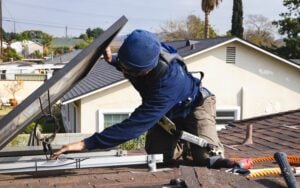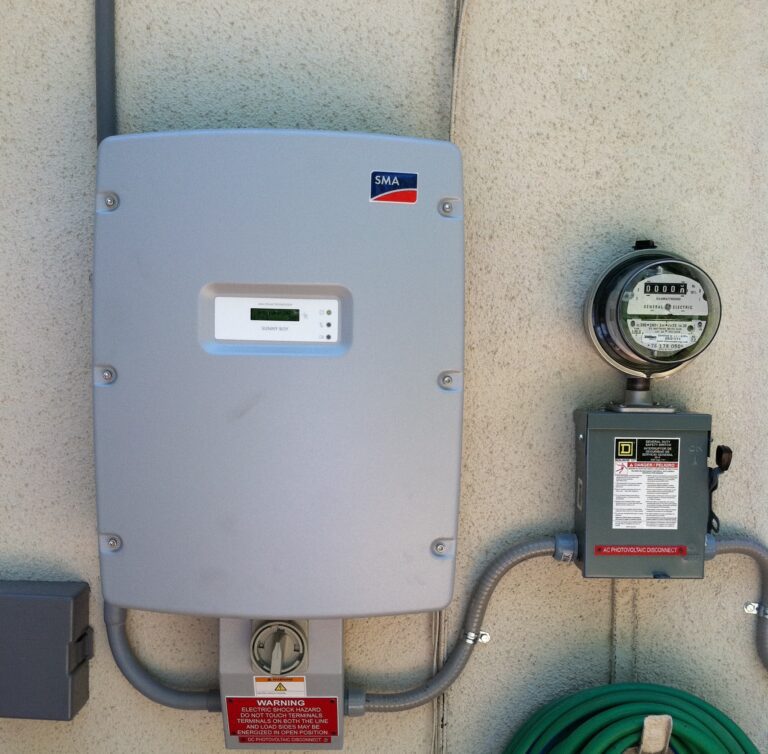
California’s Solar Setback: Why Cutting Incentives is a Step Backward
California’s recent decision to explore cuts to rooftop solar incentives is a concerning move that undermines progress toward renewable energy

In the dynamic realm of renewable energy, solar power stands out as a beacon of sustainability and efficiency. At the heart of any solar energy system lies a key player: the inverter. While solar panels capture sunlight and convert it into direct current (DC), inverters play a pivotal role in transforming that DC into the alternating current (AC) required to power our homes and businesses. In this comprehensive blog post, we will delve into the intricacies of what an inverter does for a solar system, exploring its functions, types, and the critical role it plays in unlocking the full potential of clean and renewable solar energy.
Understanding the Basics
1.1 Solar Panel Output:
1.2 The Need for Conversion:
Section 2: The Functions of an Inverter
2.1 DC to AC Conversion:
2.2 Synchronization with the Grid:
2.3 Voltage Regulation:
2.4 Monitoring and Optimization:
Section 3: Types of Inverters
3.1 String Inverters:
3.2 Microinverters:
3.3 Central Inverters:
3.4 Power Optimizers:
Section 4: Importance of Inverter Efficiency
4.1 Maximizing Energy Harvesting:
4.2 Reducing Energy Losses:
Section 5: Overcoming Challenges with Inverter Technology
5.1 Shading and Performance Issues:
5.2 Temperature Considerations:
5.3 Monitoring and Maintenance:
Section 6: Conclusion
In conclusion, the inverter serves as the unsung hero in the realm of solar energy, bridging the gap between sunlight and the devices that power our daily lives. Its role in converting DC to AC, synchronizing with the electrical grid, regulating voltage, and monitoring system performance is indispensable for the success of solar installations. As technology continues to advance, the diversity of inverter types and the improvements in efficiency further enhance the appeal of solar energy as a viable and sustainable power source. Whether you opt for string inverters, microinverters, or power optimizers, understanding the nuances of inverter technology empowers individuals and businesses to make informed decisions, unlocking the full potential of clean, renewable solar power for a brighter and more sustainable future.
Bring you the latest news and in-depth information on the solar energy.

California’s recent decision to explore cuts to rooftop solar incentives is a concerning move that undermines progress toward renewable energy
Solar energy systems are a significant investment, designed to deliver clean, renewable energy for decades. However, like any piece of
As winter approaches, it’s essential to prepare your solar energy system for the challenges that cold weather can bring. Solar
As solar energy becomes a vital part of our global move toward clean and sustainable power, innovations are constantly evolving
Installing a solar system is a significant investment and an essential step toward energy independence, environmental responsibility, and long-term cost
In recent years, energy independence has become a goal for many households, particularly in areas prone to power outages or
At EnergyAid, we understand that the quality of our service starts with the quality of our team. In the highly
In today’s dynamic solar industry, reliability and customer support are more crucial than ever, particularly during challenging times. SunPower, a

This September, the RE+ 2024 solar convention is back and bigger than ever as it celebrates its 20th anniversary at
In today’s increasingly eco-conscious market, more homebuyers are looking for properties with solar energy systems. Solar panels not only appeal
In the solar energy industry, PTO, or Permission to Operate, is a critical milestone in the process of transitioning to
As solar energy becomes increasingly popular, more homeowners are exploring the financial benefits of harnessing the power of the sun.
Solar energy has emerged as a pivotal solution in the quest for sustainable and eco-friendly power sources. As more homeowners
As the world transitions towards renewable energy, solar power has emerged as a popular and sustainable choice for homeowners. One
Solar energy has become a cornerstone of the modern push toward renewable energy. As more homeowners turn to solar power
California is embroiled in a dispute over who can install battery systems for solar setups. A new ruling by the
As the summer heat waves roll in, many homeowners find themselves relying heavily on air conditioning to stay comfortable. While
As solar energy becomes increasingly popular, homeowners are more eager than ever to harness the power of the sun. However,
As the world continues to grapple with the effects of climate change and the need for sustainable energy sources, solar
As the world continues to shift toward renewable energy, more homeowners and businesses are investing in solar panels. A significant
In the fast-paced world of business, where competition is fierce and the market is ever-evolving, standing out and maintaining a
As the world shifts towards renewable energy, solar panels have become a popular choice for both residential and commercial properties.
Solar energy has become a cornerstone of the global movement toward sustainable energy solutions. As more homes and businesses install
In today’s highly competitive business landscape, customer referrals stand as one of the most potent tools for growth and success.
Solar energy has emerged as a pivotal solution in the quest for sustainable and eco-friendly
Published on September 29, 2023 At EnergyAid, we’re dedicated to spreading knowledge about the importance
At EnergyAid, we’ve always strived to make a positive impact in the solar energy industry.